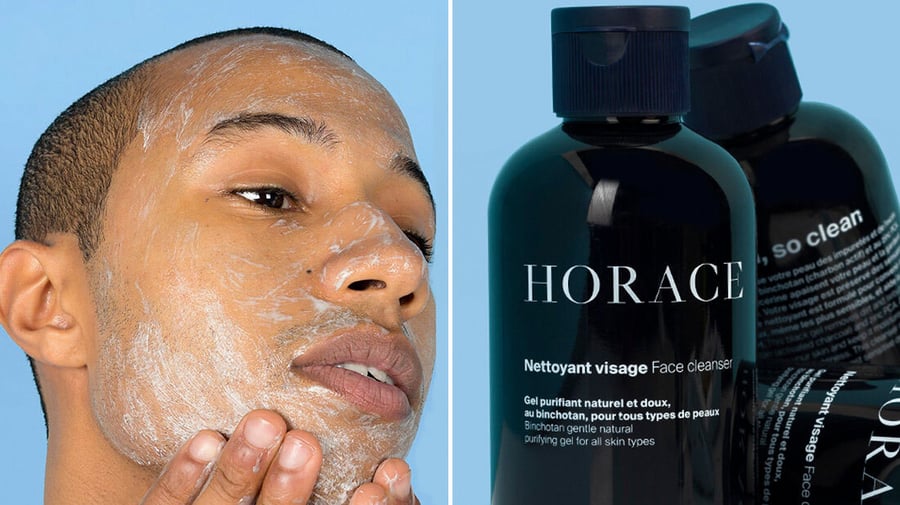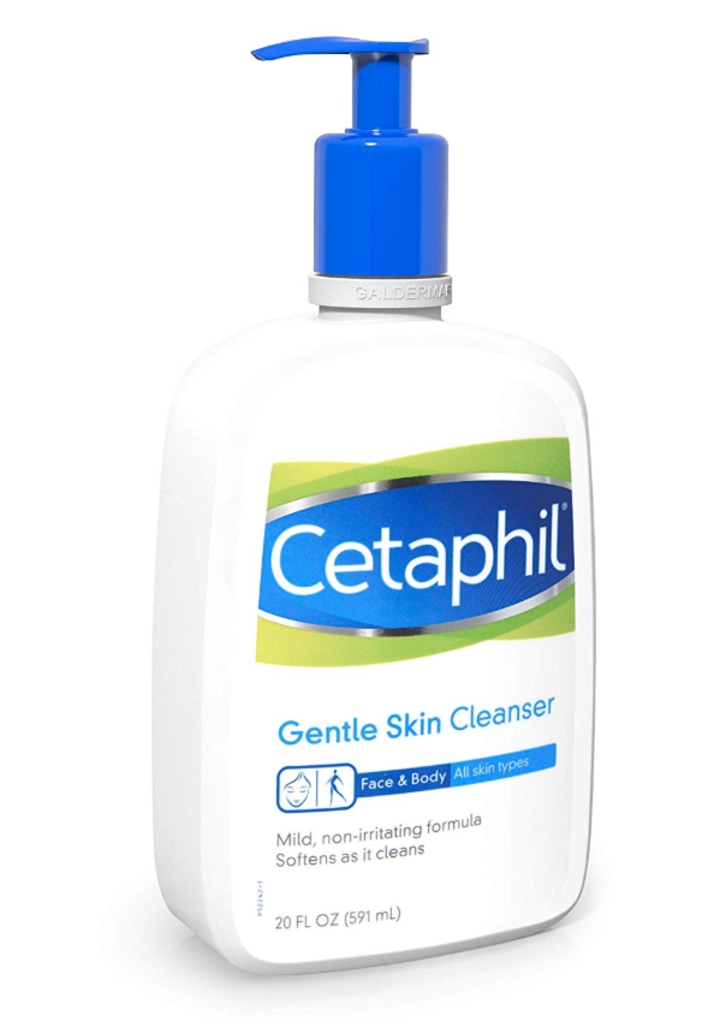The best time to use a facial cleanser is in the morning and again at night before bed. Consistency in your skincare routine maximizes the cleanser’s benefits.
Embarking on a daily skincare routine, understanding the optimal timing for each step is crucial. Facial cleansing plays a foundational role. Starting your day with a facial cleanser refreshes your skin by removing oils that have accumulated overnight. This prep step also allows subsequent skincare products, like moisturizers and sunscreens, to absorb more effectively.
As the day concludes, employing a cleanser at night is equally important. It helps to eliminate pollutants, makeup, and the day’s grime, preventing clogged pores and other skin issues. Regular cleansing, aligned with your body’s natural rhythms and the environment’s impact on your skin, lays the groundwork for a vibrant, healthy complexion. Balancing these principles promises you can reap the utmost benefits from your cleanser.

Credit: horace.com
Understanding Facial Cleansers
Facial cleansers are more than just soap. They are the foundation of a healthy skincare routine. Selecting the optimal cleanser can make a big difference in your skin’s texture and health.
Different Types Of Cleansers And Their Purposes
Cleansers come in various forms, each designed for specific skincare needs:
- Gel Cleansers – Good for deep cleaning and oily skin.
- Cream Cleansers – Hydrate and nourish dry, sensitive skin.
- Foam Cleansers – Provide a light, refreshing cleanse.
- Oil Cleansers – Ideal for removing heavy makeup and sunscreen.
- Micellar Waters – Attract impurities while hydrating.
- Bar Cleansers – Offer a classic, convenient cleanse.
- Powder Cleansers – Customizable for gentle exfoliation.
The Role Of Ph In Cleanser Effectiveness
The pH level of your cleanser is crucial. Skin’s natural pH is about 5.5. A cleanser’s pH close to this is gentle and effective.
| Facial Cleanser Type | Typical pH Range |
|---|---|
| Gel Cleansers | 4.5 – 5.5 |
| Cream Cleansers | 5.0 – 7.0 |
| Foam Cleansers | 5.5 – 6.5 |
| Oil Cleansers | 5.0 – 5.5 |
Ingredients And Skin Types: Choosing The Right Cleanser
Ingredients are key when picking a cleanser. Consider your skin type:
- Oily Skin: Look for salicylic acid or benzoyl peroxide.
- Dry Skin: Choose cleansers with glycerin or hyaluronic acid.
- Combination Skin: Hydrating ingredients with light exfoliation work best.
- Sensitive Skin: Avoid fragrances and opt for aloe or chamomile.
The right cleanser can transform your skin. Match your skin type to the cleanser with the best-suited ingredients and pH level.

Credit: www.nbcnews.com
The Role Of Timing In Skincare
Understanding the best time to cleanse your face can transform your skincare routine. Your skin’s needs vary from morning to night. Using cleansers at the right time can help maintain your skin’s natural balance. Let’s dive into the importance of timing for effective skincare.
How Skin’s Needs Change Throughout The Day
Day and night bring different challenges for your skin. In the morning, your skin prepares to defend against the sun’s rays and pollution. A gentle cleanser can remove nighttime products and oils. At night, your skin recovers from the day. A deeper cleansing routine helps to clear away pollutants and makeup.
Circadian Rhythms And Skin Cell Renewal
- Your skin follows a 24-hour cycle called the circadian rhythm.
- Cell regeneration peaks at night while you rest.
- Cleansing before bed supports this natural renewal process.
Impact Of Environmental Factors On Skin Care
Different environmental factors affect your skin throughout the day.
- Sun exposure requires a cleanser with soothing ingredients in the evening.
- Windy, cold days can strip moisture, making a hydrating cleanser essential.
Optimizing Your Cleansing Routine
Optimizing Your Cleansing Routine is about finding the perfect balance. A good cleansing routine keeps your skin healthy, clear, and glowing. But, when is the best time to reach for that bottle of cleanser? Let’s unravel the mystery and perfect your skincare ritual!
Morning Cleansing: Fresh Start Or Skip?
Starting your day with a clean canvas is essential for healthy skin. A gentle cleanse every morning:
- Removes oils produced overnight.
- Prepares skin for moisturizer and sunscreen.
- Makes you feel refreshed and ready for the day.
Evening Cleansing: Removing The Day’s Buildup
At night, your skin works hard to repair itself. Cleansing before bed:
- Takes off makeup, dirt, and pollution.
- Helps skin absorb skincare products better.
- Is a must for a clear complexion.
Special Considerations: Post-workout And Pre-makeup
There are two extra times your skin begs for a cleanse:
| Post-Workout | Pre-Makeup |
|---|---|
| Cleanse to remove sweat and bacteria. | Start with a fresh face to maintain skin health. |
| Helps avoid breakouts and clogged pores. | Improves makeup application for a smooth finish. |

Credit: quenchbotanics.com
Frequently Asked Questions On What Is The Best Time To Use Cleanser
Is It Better To Use A Cleanser In The Morning Or Night?
It’s recommended to use a cleanser both in the morning and at night. Morning cleansing removes overnight oil build-up, and evening cleansing removes daily impurities.
When Should We Use Cleanser?
Use a cleanser twice daily, in the morning to remove oils accumulated overnight and in the evening to cleanse off the day’s dirt and makeup.
Should I Use Cleanser Before Or After Shower?
Use a cleanser after showering to remove any remaining impurities. Your pores open from the warm water, making it an ideal time for a deep cleanse.
Should I Use Cleanser Before Or After Bed?
You should use a cleanser before bed to remove impurities and allow skin rejuvenation overnight. Cleansing in the morning is also beneficial for eliminating oils accumulated during sleep.
Conclusion
Selecting the ideal time to incorporate a cleanser into your routine can elevate your skincare game. Morning or evening, pairing it with your specific needs garners the best results. Remember, consistency is key for a radiant complexion. Embrace this step and watch your skin thank you with clarity and glow.

